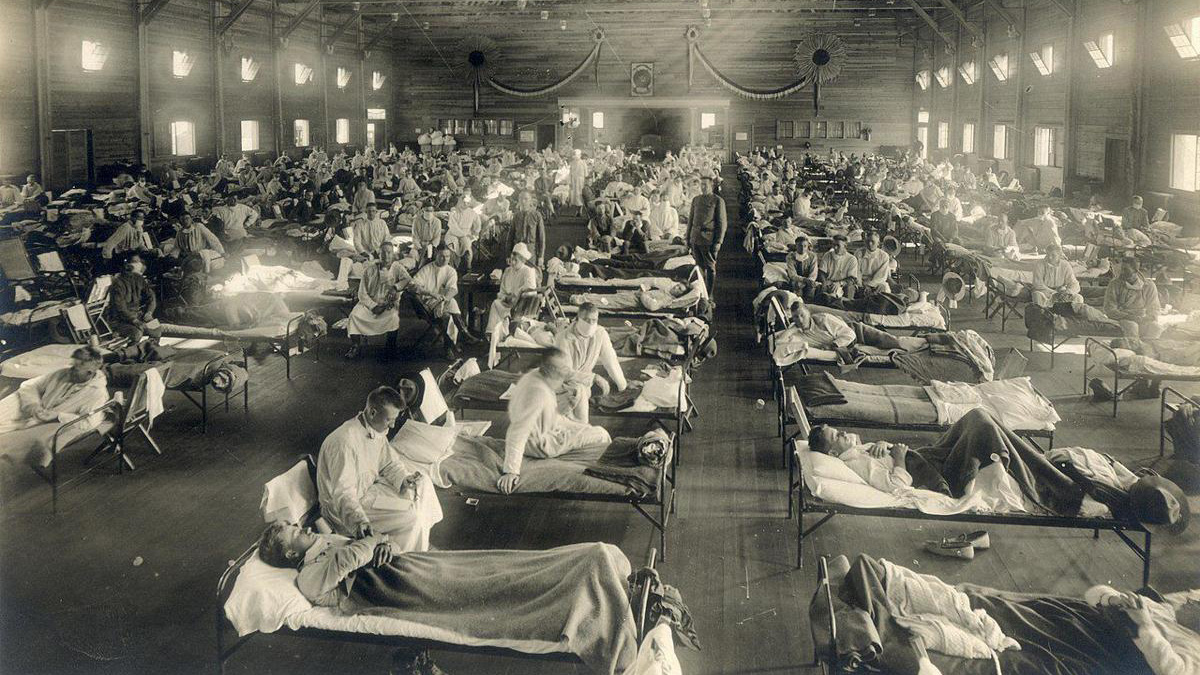I am not going to mention the current C-word. You can do your own comparisons, particularly with the figures for the 1957 Asian Flu as European countries are now down to single-figure daily deaths and the Unites States figures are declining as expected.
The information here comes from the National Centre for Biotechnology Information, which is part of the National Institutes of Health (NIH), the medical research agency of the United States.
It is also easily available on Wikipedia, so the failure of Mainstream Media to make comparisons and learn from history can only be deliberate.
There is nothing racist about the contemporary names of the flu strains. They simply refer to where the pandemic was first reported.
The 1889 Asiatic Flu
The strain was probably H2N2. Also known as the Russian flu, it was first reported in Bukhara, a city in the Asian region of the Russian Empire. Two thirds of the city’s population died.
Around 1 million people died worldwide.
One of the common treatments was quinine. Hydroxychloroquine, mentioned by President Trump, is a synthetic quinine relative.
The 1918 Spanish Flu
The strain was H1N1. Countries involved in World War One censored news about the outbreak, so the first reports came from Spain which was a neutral country. The first recorded case has been traced back to the United States.
The first wave caused 75,000 deaths in the United States within 6 months, which did not spark any quarantine actions or raise concerns because it was comparable to seasonal flu, for example 63,000 died of flu in 1915.
However, in the poor living conditions of the trenches, three quarters of French troops and half of British troops got sick.
The second wave was deadlier, and was unusual for disproportionately affecting otherwise healthy young adults. There were another two waves in 1919 and 1920.
Around 500 million people were infected, with current estimates of the death toll ranging from 17 million to 50 million.
One of the common treatments used was quinine.

An influenza medicine depot in Christchurch for “poor” people. Taken by an unknown photographer 4 December 1918. Photo: Alexander Turnbull Library Ref: 1/1-008542-G.
The 1957 Asian Flu
The strain was H2N2, an avian influenza, originating from China. It had a death rate of 0.67% with estimates of up to 4 million deaths worldwide, including 116,000 in the United States, 33,000 in the UK and 30,000 in West Germany.
The United States population in 1957 was 172 million. It is 331 million today, an increase of 91%. Therefore, a comparative death toll would be 223,000 today.
It was rarely fatal in children, and most lethal for elderly and those with pre-existing heart and lung conditions.
There were no social distancing measures, and schools remained open in the United States.
Virus cultures were sent to manufacturers on 12 May 1957, and a new vaccine started trials by the end of July. The vaccine was made publicly available in October, leading to an immediate decline in cases despite a second wave in 1958.
The 1968 Hong Kong Flu
The strain was H3N2, a variant of the Asian Flu. It appears to have arisen in pigs co-infected with both avian and human influenza. The dense living conditions of Hong Kong saw it reach its maximum intensity in two weeks, but the outbreak on the island was over in 6 months (i.e, herd immunity was achieved).
The death toll was at least 1 million worldwide, with up to 100,000 in the United States.

Restrictions on visits to Cleveland’s Grace Hospital and others were among the measures taken to slow the spread of the Hong Kong flu in 1968. BETTMANN ARCHIVE
The 2009 Swine Flu
The strain was H1N1, similar to the Spanish Flu. It had combined with a Eurasian pig flu, hence the name, although it was also known as the Mexican flu, where it originated from.
Estimates of infections range from 700 million to 1.4 billion – over 20% of the global population. The death toll ranged from 150,000 to 575,000, which is comparable to seasonal flus.
The first known case was 9 March 2009. By October, a vaccine was widely available.
Sources:
- https://www.ncbi.nlm.nih.gov/pmc/articles/PMC3291411
- https://en.wikipedia.org/wiki/1889%E2%80%931890_flu_pandemic
- https://en.wikipedia.org/wiki/Spanish_flu
- https://en.wikipedia.org/wiki/1957%E2%80%931958_influenza_pandemic
- https://en.wikipedia.org/wiki/Hong_Kong_flu
- https://en.wikipedia.org/wiki/2009_swine_flu_pandemic
If you enjoyed this article please share it.

